HONORED ON PANEL 9E, LINE 93 OF THE WALL
FRANK JOSEPH GUNDAKER
WALL NAME
FRANK J GUNDAKER
PANEL / LINE
9E/93
DATE OF BIRTH
CASUALTY PROVINCE
DATE OF CASUALTY
HOME OF RECORD
COUNTY OF RECORD
STATE
BRANCH OF SERVICE
RANK
REMEMBRANCES
LEFT FOR FRANK JOSEPH GUNDAKER
POSTED ON 8.11.2017
POSTED BY: Patrick F Coleman
48th Assault Helicopter Company Never Forgets
On 6 Nov 2015, the Veterans of the 48th Assault Helicopter Company, known as "Blue Stars", dedicated a Memorial Monument at Fort Rucker, Alabama honoring the service of the unit in Vietnam and especially the 36 Blue Star Fallen Heroes who made the ultimate sacrifice in service to their country during the period 6 Nov 1965 to 23 Aug 1972. MAJ Frank Joseph Gundaker was one of those heroic members of the unit until the time of his death.
The back image of the Monument may be seen at “SEE ALL PHOTOS” above.
The back image of the Monument may be seen at “SEE ALL PHOTOS” above.
read more
read less
POSTED ON 4.30.2017
Remembering a Brother of Alpha Phi Omega
Frank J. Gundaker was a brother of the Delta Rho Chapter of Alpha Phi Omega, Rutgers Class of 1955.
read more
read less
POSTED ON 4.22.2016
POSTED BY: SFC (Ret) Adolfo Cruz
Remembering Captain Gundaker while stationed at the U.S. Army Aviation Maint Center in Germany.
I will never forget Captain Gundaker. I stationed at the U.S. Aviation Maintenance Center in Colemam Barracks, Mannheim Germany where the HHC Commander. He appointed me to be a member of the unit Color Guard and later approved my request to marry my French wife. I met his wife during a military ceremony and it seems like I still see her face when I think about then Captain Gundaker. I left the unit for my Vietnam tour in April 1996. Will never forget him
read more
read less
POSTED ON 2.8.2016
POSTED BY: [email protected]
Final Mission of MAJ Frank J. Gundaker
On August 1, 1966, a U.S. Army helicopter UH-1D (tail number 64-13772) form the 48th Aviation Company based at Tuy Hoa was involved in an accident in which the crew was attempting to dispose of battle-damaged helicopter main rotor blade by sling-loading it and dumping it in the sea (as opposed to digging a hole to bury it or by burning it). On climbout the blades were not properly secured and began to oscillate in increasingly greater arches until they made contact with the main rotor of the aircraft, causing the helicopter to roll inverted and crash and burn on the beach. There were no survivors. The lost crew included pilot MAJ Frank J. Gundaker, crew chief Donald D. Wallace, and passengers SP5 Ernest M. Shuman Jr. and PFC Ronald J. Russell. PFC Russell was new in-country by just a few weeks and SP5 Shuman asked the regular crewman assigned to this helicopter if it was OK if Russell took his place since he was new to the aviation company. When the damaged rotor flew up into the chopper's blades, pieces of metal splattered everywhere in the camp. No one was hit by the shrapnel. A witness stated that the crew could have released the blade at any time and would have saved the aircraft but if they had, most likely a few of the troops on the ground would have been killed because several company members were playing a game of football and other sports. The first responders to the crash site later said no one was moving when they arrived. It exploded into flames and since it was fully fueled and armed it was not long before rockets and ammo began blasting all over the place. The soft beach sand slowed fire equipment so that before they arrived on scene everything had been reduced to nearly ash. Remains were identified by dental records. [Taken from vhpa.org]
read more
read less
POSTED ON 7.31.2013
POSTED BY: Curt Carter
Remembering An American Hero
Dear Major Frank Joseph Gundaker, sir
As an American, I would like to thank you for your service and for your sacrifice made on behalf of our wonderful country. The youth of today could gain much by learning of heroes such as yourself, men and women whose courage and heart can never be questioned.
May God allow you to read this, and may He allow me to someday shake your hand when I get to Heaven to personally thank you. May he also allow my father to find you and shake your hand now to say thank you; for America, and for those who love you.
With respect, and the best salute a civilian can muster for you, Sir
Curt Carter
As an American, I would like to thank you for your service and for your sacrifice made on behalf of our wonderful country. The youth of today could gain much by learning of heroes such as yourself, men and women whose courage and heart can never be questioned.
May God allow you to read this, and may He allow me to someday shake your hand when I get to Heaven to personally thank you. May he also allow my father to find you and shake your hand now to say thank you; for America, and for those who love you.
With respect, and the best salute a civilian can muster for you, Sir
Curt Carter
read more
read less



